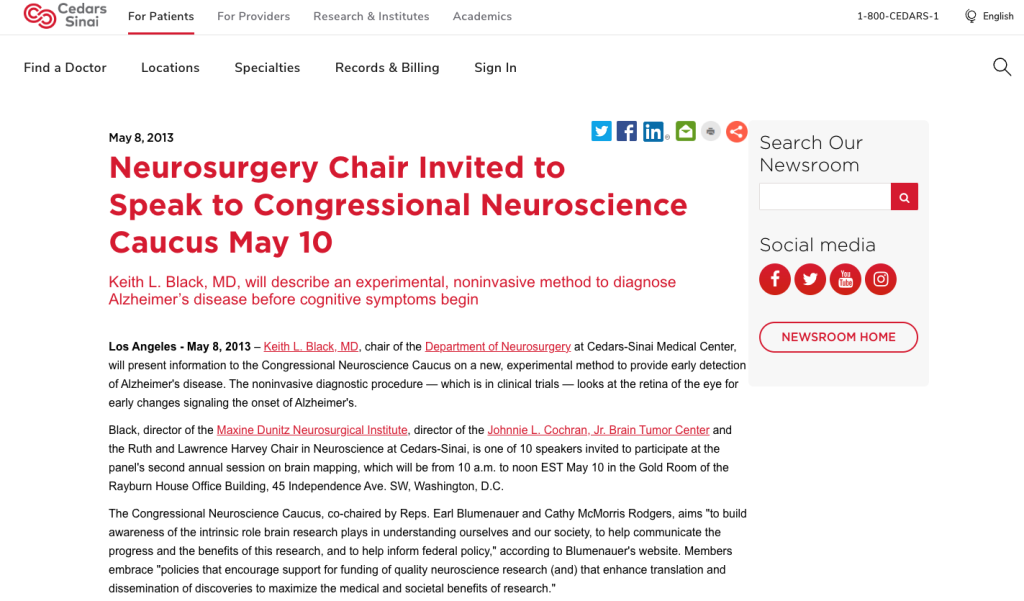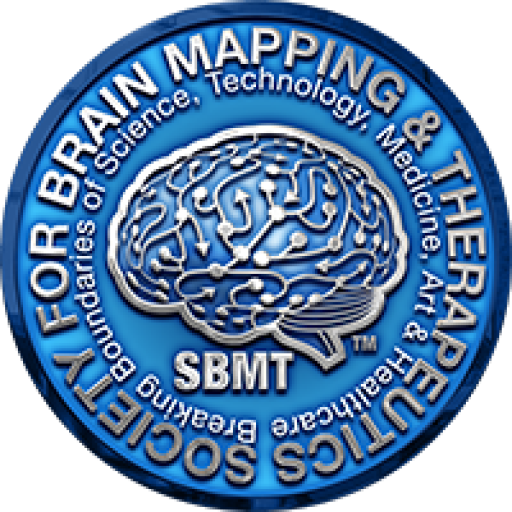
Keith L. Black, MD, will describe an experimental, noninvasive method to diagnose Alzheimer’s disease before cognitive symptoms begin
Los Angeles – May 8, 2013 – Keith L. Black, MD, chair of the Department of Neurosurgery at Cedars-Sinai Medical Center, will present information to the Congressional Neuroscience Caucus on a new, experimental method to provide early detection of Alzheimer’s disease. The noninvasive diagnostic procedure — which is in clinical trials — looks at the retina of the eye for early changes signaling the onset of Alzheimer’s.
Black, director of the Maxine Dunitz Neurosurgical Institute, director of the Johnnie L. Cochran, Jr. Brain Tumor Center and the Ruth and Lawrence Harvey Chair in Neuroscience at Cedars-Sinai, is one of 10 speakers invited to participate at the panel’s second annual session on brain mapping, which will be from 10 a.m. to noon EST May 10 in the Gold Room of the Rayburn House Office Building, 45 Independence Ave. SW, Washington, D.C.
The Congressional Neuroscience Caucus, co-chaired by Reps. Earl Blumenauer and Cathy McMorris Rodgers, aims “to build awareness of the intrinsic role brain research plays in understanding ourselves and our society, to help communicate the progress and the benefits of this research, and to help inform federal policy,” according to Blumenauer’s website. Members embrace “policies that encourage support for funding of quality neuroscience research (and) that enhance translation and dissemination of discoveries to maximize the medical and societal benefits of research.”
Cedars-Sinai researchers showed that beta-amyloid protein plaques associated with Alzheimer’s disease occur not only in the brain but also in the retina in the back of the eye; the deposits can be seen in the retina even before they begin to accumulate in the brain.
With these advances, the researchers developed a device that enables doctors to look through the eye — just as an ophthalmologist diagnoses retinal disease — to visualize amyloid plaques in the retina. Results of preclinical studies were encouraging, and the researchers now are working with major pharmaceutical companies to evaluate the technology in patient trials. The objective is to provide a quick, inexpensive, noninvasive way to screen patients for Alzheimer’s in its first stages so emerging treatments may be started early to slow or stop the progression of the disease.
The Congressional Neuroscience Caucus’s annual brain mapping program is presented with the support of the Brain Mapping Foundation.




